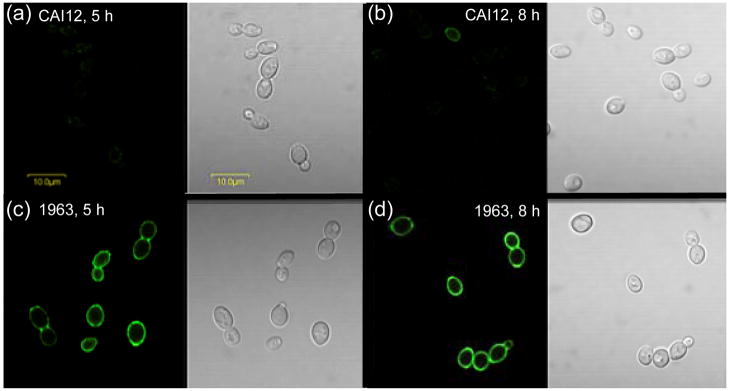Fig. 3.
Anti-Als4 immunolabeling of yeast forms over the course of culture growth to determine if Als4 produced from the strain SC5314 ALS4 smaller allele can be detected on the C. albicans cell surface. C. albicans strains CAI12 (control; a and b) and 1963 (ALS4 overexpression; c and d) were grown in YPD at 30°C. At various time points, aliquots of culture were removed, fixed with paraformaldehyde and immunolabeled with anti-Als4. For CAI12, Als4 presence on the cell surface varies with stage of growth. Many inoculum cells were Als4-positive (see Fig. 1a), but became more rare in the culture as cell divisions produce Als4-negative yeasts. At 5 h post-inoculation (a), Als4-positive CAI12 cells became more difficult to detect. At 8 h post-inoculation, ALS4 expression began to increase in strain CAI12, producing Als4-positive daughter cells (b). In contrast, strain 1963 that produced Als4 constitutively under the control of the TPI1 promoter, showed a consistently strong presence on the surface of the yeast cells at 5 h (c) and at 8 h (d). Because the native ALS4 alleles in strain CAI12 were not transcribed actively at these time points, surface Als4 in strain 1963 was derived primarily from the PTPI1-ALS4 construct and supported the conclusion that Als4 produced from the smaller ALS4 allele was detectable on the C. albicans cell surface. Cells were imaged using an Olympus BX50 FluoView microscope.

